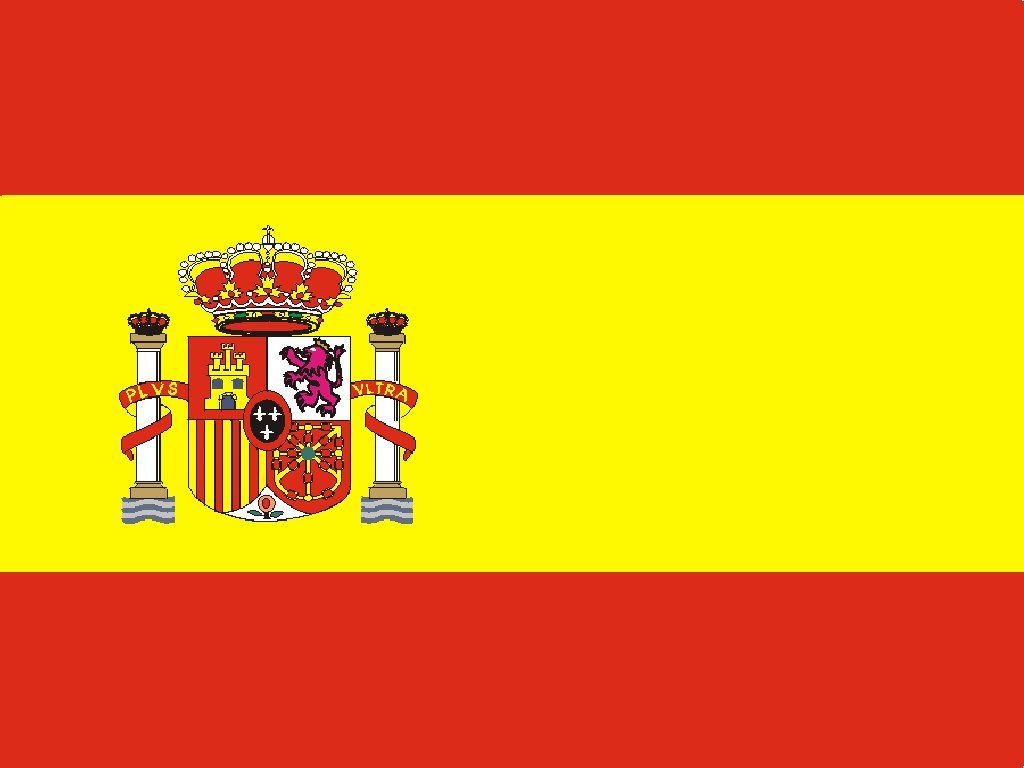There’s something inherently captivating about river pebbles. Smooth, rounded, and shaped by millennia of flowing water, they embody nature's patient artistry. But beyond their natural beauty lies incredible utility. When crushed, these durable stones transform into a versatile, high-performance aggregate material – crushed river pebbles. As a manufacturer deeply invested in the aggregate industry, I’ve witnessed firsthand the growing demand for this exceptional resource. Whether you're a contractor seeking reliable construction aggregate, a landscaper dreaming up stunning designs, or involved in filtration or agriculture, understanding crushed river pebbles and the process behind them is key. This comprehensive guide dives into everything you need to know: from different types like stunning crushed white pebbles and lightweight crushed clay pebbles, to the essential machinery – the pebble crusher – that makes it all possible. Let's unlock the potential within these ancient stones!
What Are Crushed River Pebbles?
Crushed river pebbles are exactly what the name suggests: naturally occurring river pebbles that have been mechanically processed through pebble crushing equipment to break them down into smaller, angular fragments. Unlike their naturally smooth, rounded counterparts, crushed pebbles possess:
-
Angularity: The crushing process creates interlocking edges, providing superior stability and load-bearing capacity compared to rounded gravel. This is crucial for construction bases and concrete mixes.
-
Consistency: Screening after crushing ensures uniform size distribution, essential for predictable performance in various applications.
-
Versatility: Available in a wide range of sizes, from coarse aggregates for drainage to fine sands for finishing touches.
-
Durability: Inheriting the hardness and weather resistance of their parent river stones, they offer long-lasting performance.
Why Choose Crushed River Pebbles Over Other Aggregates?
Having supplied aggregate solutions globally, the advantages of crushed river pebbles consistently impress me and our clients:
-
Exceptional Strength & Durability: River pebbles are typically composed of hard, dense minerals like quartz, granite, or basalt. This makes the resulting crushed pebble gravel highly resistant to weathering, abrasion, and crushing forces – ideal for high-traffic areas and structural applications.
-
Superior Drainage: The angular shape and inherent gaps between particles create excellent permeability. This makes them perfect for French drains, septic fields, and landscaping projects where water management is critical.
-
Aesthetic Appeal: Offering a naturally elegant, multi-colored appearance ranging from earthy browns and greys to vibrant reds and even pure crushed white pebbles, they elevate the look of any project far beyond plain gravel. They bring a touch of riverbed sophistication.
-
Eco-Friendliness: Utilizing natural river stone deposits (often sourced as a byproduct of dredging or managed sustainably) and processing them locally reduces the environmental footprint compared to transporting quarried stone long distances.
-
Low Maintenance: Unlike organic mulches, they don't decompose, attract pests, or require frequent replacement. A well-laid bed of crushed river pebbles lasts for years.
Exploring Different Types of Crushed Pebbles
While crushed river pebbles are the most common, specific types offer unique properties:
-
Crushed White Pebbles: Sourced from quartz-rich riverbeds, these offer a brilliant, clean, and highly reflective surface. They are prized for:
-
Creating stunning, bright pathways and driveways.
-
Modern decorative landscaping accents (succulent gardens, contemporary borders).
-
Reflective mulch around plants.
-
High-visibility aggregate in specialty concretes. Seeing a landscape transformed by the luminosity of crushed white pebbles is always rewarding – it adds a touch of elegance that’s hard to beat.
-
-
Crushed Clay Pebbles (Often Expanded Clay Aggregate - ECA): While not strictly "crushed" in the same way as mineral pebbles, crushed clay pebbles (more accurately, expanded clay pebbles) are a crucial lightweight aggregate. Made by firing natural clay at high temperatures, causing it to expand into round, porous pellets, they are sometimes crushed for specific uses. Key applications:
-
Horticulture & Hydroponics: The primary use. Their porosity provides excellent aeration and moisture retention for plant roots. Crushing can create finer grades for specific media blends.
-
Lightweight Concrete: Significantly reduces the weight of concrete structures without sacrificing too much strength.
-
Geotechnical Fill: Useful where weight is a concern (e.g., over weak soils, roof gardens).
-
Filtration: Used in water and wastewater treatment systems. The ingenuity of using fired clay to create such a versatile, lightweight material never ceases to amaze me, especially its impact on modern agriculture.
-
Comparison of Common Crushed Pebble Types
| Feature | Crushed River Pebbles (General) | Crushed White Pebbles | Crushed/Expanded Clay Pebbles |
|---|---|---|---|
| Primary Source | Natural Riverbeds | Quartz-rich Riverbeds | Processed/Fired Clay |
| Composition | Quartz, Granite, Basalt, etc. | Predominantly Quartz | Expanded Clay |
| Color Range | Mixed Earth Tones, Greys, Reds | Bright White, Creams | Reddish-Brown |
| Density | High (Approx. 1.4 - 1.6 t/m³) | High (Similar) | Very Low (0.3 - 0.8 t/m³) |
| Strength | Very High | Very High | Low to Moderate |
| Porosity | Low (Angular Particles) | Very Low | Very High (Porous) |
| Drainage | Excellent | Excellent | Excellent (but can retain H2O) |
| Primary Uses | Construction, Drainage, Landscaping | Decorative Landscaping, High-Vis Paths | Horticulture, Lightweight Concrete, Filtration |
| Aesthetic | Natural, Rustic | Bright, Clean, Modern | Textured, Lightweight Look |
The Heart of the Process: Pebble Crushing Equipment
Producing high-quality crushed river pebbles, crushed white pebbles, or preparing crushed clay pebbles (if size reduction is needed after expansion) relies fundamentally on efficient pebble crushing technology. Selecting the right pebble crusher is paramount for productivity, product shape, and operational cost. As machinery manufacturers, we understand the nuances deeply.
Key Types of Pebble Crushers:
-
Jaw Crushers: The workhorses of primary crushing. Ideal for the initial size reduction of large river pebbles (up to 1m+ diameter) down to manageable sizes (150-200mm). They use compressive force between a fixed and a moving jaw plate.
-
Pros: Robust, high capacity, relatively simple maintenance. Great for hard, abrasive stones like quartz pebbles.
-
Cons: Product shape can be less cubical than cone crushers. Less efficient for smaller final sizes alone.
-
-
Cone Crushers: The go-to for secondary and tertiary crushing stages. Essential for producing well-shaped, smaller aggregate sizes needed for concrete, asphalt, or decorative grades. They crush rock between a gyrating mantle and a concave bowl liner.
-
Pros: Excellent particle shape (cubical), high reduction ratios, efficient for medium-hard to hard materials like river pebbles.
-
Cons: More complex than jaw crushers, higher initial cost, sensitive to feed size and moisture.
-
-
Impact Crushers (HSI/VSI): These crushers use high-speed impact rather than compression.
-
Horizontal Shaft Impactors (HSI): Good for softer materials or producing a more uniform product shape in primary/secondary roles. Can struggle with very hard, abrasive river pebbles due to wear.
-
Vertical Shaft Impactors (VSI - "Sand Makers"): Crucial for producing high-quality crushed sand (manufactured sand - M-Sand) from the byproducts of pebble crushing or directly feeding smaller pebbles. They crush via rock-on-rock or rock-on-anvil action, creating very cubical, well-graded particles. Witnessing a VSI transform coarse feed into perfectly graded sand is like watching alchemy!
-
Pros (VSI): Best particle shape, produces high-quality sand, good for shaping.
-
Cons (Impact Crushers generally): Higher wear costs on abrasive materials like quartz, more sensitive to feed gradation.
-
Choosing the Right Pebble Crusher: What Matters Most
Selecting the optimal pebble crusher isn't a one-size-fits-all decision. It requires careful consideration:
-
Feed Material Characteristics: Hardness (Mohs scale - quartz is 7!), abrasiveness, size distribution, moisture content. Hard, abrasive river pebbles demand robust wear parts.
-
Desired End Product: What sizes and shapes are needed? Coarse base material? High-quality concrete aggregate? Decorative chips? Manufactured sand? This dictates the crushing stages and crusher types.
-
Required Capacity (TPH): How much material needs processing per hour? This scales the equipment size.
-
Mobility Needs: Is this a fixed quarry plant or a mobile operation moving between sites?
-
Operating Costs: Consider power consumption, wear part life (crucial for abrasives), and maintenance requirements. Investing in a crusher with longer-lasting wear parts significantly impacts profitability. Seeing a well-maintained crusher efficiently processing tonnes of pebbles with minimal downtime is a manufacturer's pride.
Optimizing Your Pebble Crushing Plant (Beyond the Crusher)
A successful pebble crushing operation involves more than just the crusher:
-
Effective Feeding: Vibrating Grizzly Feeders (VGF) remove undersize material before the primary crusher, improving efficiency and reducing wear. Apron feeders handle larger, heavier feeds.
-
Pre-Screening: Scalping screens remove fines or oversize before primary crushing, optimizing crusher performance and capacity.
-
Post-Crushing Screening: Multiple decks of vibrating screens are essential to separate the crushed pebbles into precise, marketable size fractions (e.g., 3/4", 3/8", #4, #8, sand). Closed-circuit systems (crusher-screen-crusher) ensure final product specifications are met.
-
Conveying: Robust belt conveyors efficiently move material between stages.
-
Dust Control: Suppression systems (water sprays) or collection systems (baghouses) are vital for environmental compliance and worker safety, especially during pebble crushing which generates significant dust. A clean, well-organized plant isn't just compliant; it reflects operational excellence.
Applications: Where Crushed River Pebbles Shine
The versatility of crushed river pebbles is astounding. Here’s where they deliver exceptional value:
-
Construction & Infrastructure:
-
Concrete Aggregate: Provides excellent strength and durability. Angular shape enhances bonding with cement paste. Crushed white pebbles can be used in architectural concrete.
-
Asphalt Aggregate (Roadbase): Angular particles create a stable, rut-resistant matrix.
-
Drainage Layers: Under foundations, behind retaining walls, in French drains – their permeability is key.
-
Railroad Ballast: Provides drainage and stability for railroad tracks.
-
Pipe Bedding: Protects underground pipes and facilitates drainage.
-
-
Landscaping & Hardscaping (Where Beauty Meets Function):
-
Pathways & Driveways: Durable, attractive, and provides excellent drainage. Crushed white pebbles create striking, luminous paths.
-
Decorative Ground Cover: In garden beds, around trees, in xeriscaping – suppresses weeds, retains moisture, and looks fantastic. A wide range of colors and sizes allows for creative expression.
-
Dry River Beds: Mimics nature while providing drainage solutions.
-
Patio & Walkway Bases: Stable foundation material.
-
Rock Gardens & Water Features: Natural aesthetic integration.
-
Erosion Control: On slopes and embankments.
-
-
Specialized Uses:
-
Horticulture: While distinct, crushed clay pebbles dominate hydroponics. Finer grades of crushed river pebbles can be used in soil mixes or as top dressing.
-
Filtration: Used in some water filtration systems and septic drain fields due to permeability.
-
Aquariums & Terrariums: Provides a natural substrate (ensure thorough cleaning!).
-
Roofing Granules: Provides UV protection and fire resistance for asphalt shingles (requires specific processing).
-
Selecting the Right Crushed Pebbles for Your Project
Choosing the perfect grade and type involves asking key questions:
-
What is the primary function? (Drainage, Decoration, Structural Support, Filtration)
-
What size is needed? (Refer to standard sieve sizes: e.g., 3/4" for drainage/roadbase, 3/8" for pathways, #8 or finer for decorative top layer or concrete sand).
-
What aesthetic is desired? (Natural mixed colors, bright white crushed white pebbles, specific hue?)
-
Are there any technical specifications? (e.g., ASTM or EN standards for concrete aggregate, LA Abrasion value for durability).
-
What is the budget? (Generally, crushed river pebbles are mid-range, crushed white pebbles might command a premium, crushed clay pebbles vary based on application).
Sourcing and Sustainability: Responsible Pebble Use
As demand grows, responsible sourcing is crucial:
-
Managed River Gravel Extraction: Ensuring dredging or mining operations have minimal ecological impact, operate under permits, and include habitat restoration plans.
-
Recycled Concrete Aggregate (RCA): While not pebbles, RCA can sometimes substitute in certain applications, reducing demand for virgin aggregate. Promoting sustainable practices within the aggregate industry is a responsibility we all share.
-
Local Sourcing: Minimizing transportation distances significantly reduces the carbon footprint of crushed river pebbles.
-
Quarry Reclamation: Progressive rehabilitation of extraction sites.
The Future of Crushed Pebbles: Trends to Watch
-
Increased Demand for Specialty Aggregates: Growth in architectural concrete and high-end landscaping fuels demand for consistently colored and shaped materials, like premium crushed white pebbles.
-
Focus on Manufactured Sand (M-Sand): As natural sand sources deplete or face restrictions, VSI crushers producing high-quality sand from pebble crushing byproducts become increasingly vital.
-
Advancements in Crusher Technology: Continued development in wear materials (like advanced ceramics), automation, energy efficiency, and dust control for pebble crushers.
-
Sustainability as a Driver: Greater emphasis on lifecycle analysis, recycled content, and low-impact extraction methods for crushed river pebbles and other aggregates.
Conclusion: Harnessing the Power of Nature's Stone
Crushed river pebbles are far more than just broken rocks. They represent a perfect synergy of natural beauty and engineered performance. From the foundational strength they provide beneath our roads and buildings, to the aesthetic grace they lend to our gardens, and the specialized roles of crushed white pebbles and crushed clay pebbles, these aggregates are indispensable. The journey from raw river stone to precisely graded aggregate hinges on efficient, well-maintained pebble crushing equipment – the unsung heroes of the aggregate industry.
Whether you're specifying materials for a major infrastructure project, designing a serene garden path, or setting up a pebble crushing plant, understanding the types, properties, production process, and applications empowers you to make the best choices. As manufacturers committed to this field, we see the constant innovation and enduring value that crushed river pebbles deliver. Embrace their potential, specify them wisely, and appreciate the blend of natural history and modern engineering they represent in every successful project. The power and beauty truly are set in stone.
More Information on my website. You can search on search engines: SBM Mill & Crusher












Comments (0)